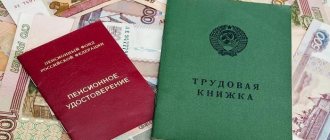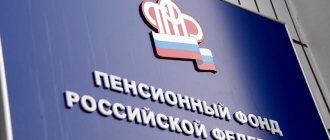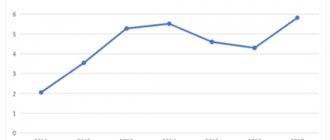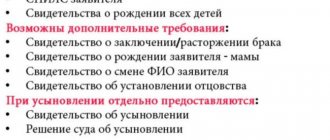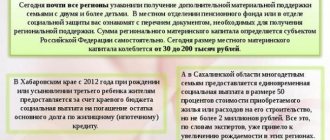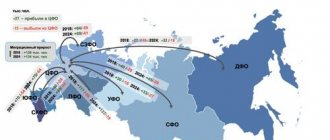- Cost of studying in Finland for Russians and foreigners
- Finnish preschool education
- Secondary education in Finland, colleges and lyceums
- How to enter Finnish institutions
- Higher education in Finland
- How much does it cost to study in Finland?
- Bachelor's, Master's and Doctoral degrees
- Study in Finland for free
- Language classes
- Studying in Finland for Russians after 11th grade
The education received in Finland is considered the best in the world. It is organized according to the principles of equality, individuality, freeness, practicality and voluntariness, which determines the high quality of knowledge.
Cost of studying in Finland for Russians and foreigners
Larkkulla Language School
- Country: Finland
- City: Karya
—
Group Finnish language courses via Skype online at Lärkkulla school for adults over 16 years old.
Check-in dates
can be confirmed with a consultant
Price from: 22610 ₽ ?
250 EUR
in 1 month
Choose

English, Finnish, Swedish languages in Finland at Lärkkulla school for adults from 16 years old
- Country: Finland
- City: Karya
—
Accommodation: (Dormitory - Residence)
Lärkkulla school for adults from 16 years old.
Check-in dates
can be confirmed with a consultant
Price from: 33463 ₽ ?
370 EUR
Reviews: (2)
Choose

Accommodation and learning Finnish with a teacher's family in Finland for children and adults
- Country: Finland
- City: Helsinki
—
Accommodation: (Family)
Home Language International for children and adults in Finland (Finnish language)
Check-in dates
can be confirmed with a consultant
Price from: 108529 ₽ ?
1200 EUR
Choose
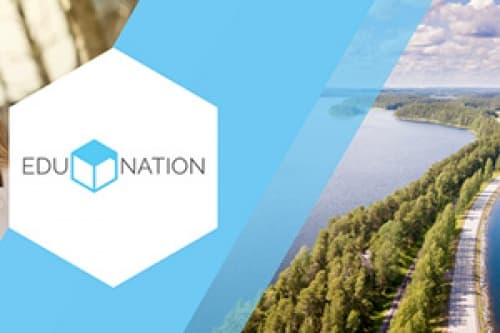
Edunation Pathway Diploma - A new way to enter universities in Finland
- Country: Finland
- City: Tampere
—
Accommodation: (Dormitory - Residence)
The Edunation Pathway Diploma is a pathway program for international students who wish to begin their university studies abroad but do not yet meet the direct entry requirements.
Arrival dates:
February, May, September (15.2.-21.5, 17.5.-20.8, 13.9.-17.12.)
Price from: 271322 ₽ ?
3000 EUR
Choose

Higher education in Finland in English
- Country: Finland
- City: Helsinki
—
Accommodation: (Dormitory - Residence)
Higher education in Finland in English
Arrival dates
can be confirmed with a consultant
Price from: 542644 ₽ ?
6000 EUR
Choose
Tuition fees in Finland
As already mentioned, until 2021, all foreigners could receive higher education in Finland absolutely free of charge. The obligatory fee was a symbolic contribution of about 80 euros per year . From autumn 2021, Russians, Ukrainians and other citizens from non-EU countries with a study program in English are forced to pay at least 1,500 euros per year for their studies. At prestigious universities the amount is 10,000–16,000 euros. Fortunately, the Finnish authorities promise to introduce additional scholarships for this category of students.
Even without tuition fees, you need to take financing your life in Finland very seriously. Officially, Finnish authorities require foreign students to have a minimum amount of 560 euros per month .
But practice shows that the optimal figure for the average student from abroad is about 1000 euros per month. For those who are especially economical, 800–900 euros. Living in Finland is not cheap.
Depending on the city and conditions, the cost of renting student housing in Finland will cost about 200–350 euros per month . You need to choose a suitable option in advance, before the start of the school year.
The Finnish organization SOA has a list of all student housing providers on its website. Renting living space privately will cost at least 600 euros. Medical insurance is a mandatory expense; without this it is impossible to obtain a residence permit in Finland. The cost is around 300 euros per year.
Finnish preschool education
In Finland, kindergartens begin accepting children from the moment they are nine months old. Children have the right to stay in this institution until they are five years old. The employees are faced with the task of providing children with proper care throughout the day and taking part in raising the future generation on an equal basis with their parents.
Parents must pay a fee for their child's stay in a preschool institution. It is not fixed and the same for everyone, and it does not depend on the status of the kindergarten or its interior. The amount of fees for being in a preschool institution depends on the income of the parents. The minimum fee is twenty-three euros, and the maximum is two hundred and fifty-four.
A group can consist of twelve to twenty-one children. The exact amount depends on the age of the kids. More employees work with very young children than with older children.
In large cities, situations often occur when there are no places in kindergartens. In this case, the state provides a cash payment to parents who cannot send their child to a preschool institution and are forced to study with him independently at home.
From the age of six, children begin to attend preparatory courses for primary school, which take exactly one year. They have the status of mandatory for all children and are completely free. Groups for preparation are recruited in preschool or already in elementary school.
Secondary education in Finland, colleges and lyceums
Receiving secondary education lasts for nine or ten years and includes two stages. Schoolchildren do not take exams and do not have diaries. Parents learn about educational achievements from the report card in electronic form, which is located in the Wilma system. Children begin their studies in the middle of the last summer month. The school year ends in late spring or early summer. Children attend classes only during the first shift, five times a week. During the entire period, they are allocated vacation time three times.
Children spend six years in primary school. All this time, one teacher interacts with them in a permanent classroom. During the first two years, the main emphasis is on learning the native language, mathematics, reading and natural history. Children are also introduced to physical education and creativity.
With each subsequent year, the number of subjects studied increases, and by the end of primary school, children have skills in important disciplines. The required languages include Finnish and Swedish, as well as two foreign languages.
In the seventh grade, high school begins, located in a different building. Now each discipline belongs to its own teacher. The learning process becomes much easier due to the presence of a teacher's assistant in the lesson. Children study in high school for three years. They can take an extra year to improve their knowledge. After completing high school, children can continue their education or get a job.
Finnish graduates continue their studies at a college or lyceum. Weak students receive working professions in colleges or vocational schools, and students with high scores continue their studies at the lyceum. Depending on the future specialty, studying in Finland lasts from one to four years.
Features of higher education in Finland
The quality of education in Finland is quite high. Preparatory education, secondary and higher education are usually free. In this country, every person, regardless of social status and income level, can receive a decent education and then find a well-paid job.
The education system in Finland consists of preschool and preparatory education, secondary education (lower and upper schools), secondary education (gymnasiums and vocational schools), and higher education.
Finnish children go to school from 6 to 16 years of age. When a child turns 16, he can independently choose his future path. As a rule, children continue their studies at the gymnasium, go to college or go to work. Most schools in Finland are public, education is in Finnish, and in some schools it is Swedish.
Secondary education in Finland includes 4 levels:
- Junior school (grades 1-6). In grades 1-2, Finnish schoolchildren study mathematics, reading, Finnish language, and religion. From the 3rd grade, schoolchildren begin to study foreign languages, computer technologies and musical art. In 5th grade the following subjects appear: geography, chemistry and physics.
- High school (grades 7-9). In the 7th grade, additional disciplines are added to the list of compulsory disciplines - at the choice of students. In the 9th grade, schoolchildren are already beginning to master the basics of their future profession.
- Additional level (grade 10). In 10th grade, those who do not have very good academic performance can improve their performance.
- College (grades 11-12). After finishing 10th grade, students can continue their studies at a gymnasium or enter a vocational college. After completing twelve years of study, Finnish schoolchildren can become university students.
In Finland, most educational institutions operate free of charge. In addition, the state provides schoolchildren not only with the necessary supplies, but also provides free meals and transportation to travel to school.
A distinctive feature of Finnish schools is an individual approach to each student. Children with different abilities, both mental and physical, are educated together. At the same time, they are given tasks of varying complexity.
Finnish schools do not assign large homework assignments. Teachers are of the opinion that children should spend their free time from school with their peers, and not with textbooks. Therefore, Finnish children take up to half an hour a day to complete their homework.
In Finland, schoolchildren do not take exams. The only mandatory test is the standardized test, which students take when they turn 16.
Finland has a high level of education also because only the best teachers teach children. The monthly salary of a Finnish teacher is 3.5 thousand euros. Therefore, when entering a university at the Faculty of Pedagogy, 20 people apply for 1 place.
In Finland there are not only state schools, but also embassy schools. Previously, only children of employees could study there, but today anyone can enroll in the school at the embassy.
Children of parents who work at the embassy can study in such schools for free; others will have to pay from 120 to 270 euros per month, depending on the form of education. Embassy schools provide not only full-time education, but also part-time and part-time education.
There are language centers in Finland that allow foreign students not only to learn Finnish, but also to get acquainted with the local culture.
As a rule, the duration of advanced language courses is 12 weeks. During this time, students are fully immersed in the language environment.
There are also short-term language courses in Finland. They are more suitable for those who speak the language at an intermediate level. For those wishing to learn a language from scratch, it is advisable to choose long-term programs (for a semester or a year).
When participating in long-term programs, students are issued a certificate confirming their language proficiency level. It can be presented upon admission to a university in Finland and subsequent employment.
In Finland there are language camps where children can combine relaxation with learning. In such camps they study English and Finnish. Depending on the age of the children and the intensity of the language course, classes take from 2 to 5 hours a day.
Language camps accept children from 5 to 15 years old. However, programs for children 5-7 years old are entertaining in nature, but children of older groups are already studying according to enhanced schemes.
The duration of such tours is 14 days, and the cost is 800-900 euros (training, meals, leisure). You will have to pay extra for excursions, travel, insurance and visas separately.
There are 2 types of universities in Finland: universities and polytechnics. Universities offer master's (2 years) and postgraduate (4 years) programs. Polytechnics - bachelor's (3-4 years) and master's (1-1.5 years) programs.
Master's studies in polytechnics are aimed at increasing the qualification level of exclusively practicing specialists.
Russian students can enter a local university immediately after receiving secondary education in their homeland. To do this, you must submit an application and pass the entrance exams.
Some universities in Finland have a single application database. This means that you can apply to 2-3 study programs at once by passing a single exam. Admission to a master's program does not require passing entrance tests, with the exception of certain cases.
An obvious advantage of studying at Finnish universities is freedom of choice. Finnish universities do not have strict schedules for completing programs; moreover, students form them on their own. This approach is designed to motivate students and teach them to take responsibility for their own performance.
Educational programs at universities in Finland contain a basic set of subjects for bachelor's and master's degrees. However, students can choose a number of additional ones, which allows them to deepen and strengthen their knowledge.
Another advantage of higher education in Finland is the relationship between teachers and students. They are not burdened with conventions and formalities. The student can seek advice and help from the teacher. If you fail to pass the test the first time, you can retake it later.
Local students study the material not in order to get a high score, but for knowledge that will be useful to them in the future. There are not many credits in Finnish universities, which means students have more time to prepare.
Given this, it is not surprising that students at local universities are now second only to Japanese students in terms of academic performance.
Russian receive higher education in Finland through paid English-language programs, which are provided at each university.
The only downside that can be noted is that to study at universities in Finland on a free basis, you need to speak Finnish. It is also worth mentioning the high cost of living in Finland. According to minimal estimates, Finnish students spend from 700-1200 euros per month on household expenses.
Bachelor's degree is the first stage of higher education in Finland . The duration of educational programs may vary. Thus, in universities it is 3 years, while in polytechnics it is 4 years.
The undergraduate curriculum includes lectures, practical classes, seminars and independent work. During the first 2 years of study, students study basic subjects, and in the 3rd-4th year they write scientific work and undergo an internship.
Most universities in Finland allow students with high academic performance to graduate 6-12 months ahead of schedule.
Bachelor's degree programs may vary depending on the institution. Educational institutions build the educational process independently. This applies not only to teaching methods, but also to the choice of teaching materials.
Master's studies last for 2 years, with the exception of polytechnics - 1.5 years. However, to enroll in a master's program at a polytechnic, you need to have a bachelor's degree and at least 2 years of work experience in your specialty.
Polytechnics offer students a flexible study schedule to combine study with work. Some universities in Finland have combined programs (bachelor's + master's) lasting up to 5 years.
Education at universities in Finnish is free for Russian students, but you will have to pay for English-language programs. State scholarships in Finland are available to master's and doctoral students.
Bachelor's students can count on receiving financial assistance, but only from the university or private funds. Scholarships for undergraduate and graduate students in Finland are provided based on academic performance, while scholarships for doctoral students are provided based on the results of scientific work.
Admission to higher education institutions in Finland is carried out on a competitive basis. To become a student at a local university, you must collect a package of papers and pass entrance exams. To enroll in a bachelor's degree, you need to pass face-to-face exams in your chosen specialty or the international SAT test.
To study in a master's program, you do not need to take exams; enrollment is based on review of a package of papers. A prerequisite is the availability of IELTS or TOEFL certificates, which confirm the level of English language proficiency. Enrollment in a polytechnic master's program requires a bachelor's degree and at least 2 years of work experience in the specialty.
How to enter Finnish institutions
Finnish universities have their own deadlines for passing entrance exams and submitting documents. All necessary information is provided on the official website of the educational institution. It is possible to enroll in several institutions at the same time and use the results of one exam if it is required in several educational institutions. What you need to enter the university :
- The training programs are carefully reviewed and a letter is written with questions about the timing and nuances associated with admission. The letter also specifies the list of required documents;
- documents are sent, after which a call to take exams is expected. During this period, the applicant must begin collecting documents for a visa to Finland in order to obtain permission to visit the country during the entrance exams;
- the applicant passes the exams and waits for the decision of the admissions committee;
- If everything went well and the applicant became a student, he must apply for a student visa and dormitory.
Higher education in Finland
There are two types of higher education institutions in Finland:
- universities;
- universities of applied sciences (in other words: polytechnic institutes).
During the training period, the student goes through three stages: bachelor, master, doctor of science. Teaching is carried out in Finnish, Swedish and English. To fully assimilate new knowledge and communicate freely, it is necessary to speak two languages.
Higher education is built on the principle of the Bologna system. At all educational institutions, students accumulate credits. Each credit includes twenty-five hours of credit spent on lectures, practice, and examinations. This gives students greater freedom. They can choose the items they need themselves. The education system in Finland makes it possible to continue studying in another country.
Russian students studying at Russian universities have the opportunity to transfer to a Finnish university. If a student has completed several courses, he can immediately enroll in a master's program by passing exams in the necessary disciplines as an external student.
Do you have questions about obtaining higher education in Finland? Get a free consultation!
- Selection of educational institutions taking into account your requirements
- Registration of documents and visas
- Official tuition prices without agent commission
- Full support at all stages of training
- Monitoring your child 24 hours (if necessary)
Popular Universities:
- University of Helsinki (Helsingin yliopisto);
- University of Lapland (Lapin yliopisto);
- Mikkeli University of Applied Sciences (Ammattikorkeakoulu).
Education system in Finland
The Finnish education system consists of the following levels:
Preparatory training (esiopetus)
This training lasts one year, preparatory education is free, begins when the child turns 6 years old, and is organized in kindergartens or schools.
In eskari (as esiopetus is called here for short), children begin to prepare for school, learn how to behave in school, sit at a desk, they have a textbook aimed at learning the alphabet, numbers and basic counting. All educational materials are free. Since 2015 this training has become mandatory.
The duration of the school day at Eskari is about 4 hours. At the end of the school year, tests are administered to determine a child's readiness for school. Often, for children who do not speak Finnish well enough, the eskari program is repeated or they are transferred to a special class with intensive study of the Finnish language ( valmistava luokka ). Such classes are not available everywhere; you need to find out if there is such a class in your school, district, or city.
Basic secondary education (perusopetus)
This is a compulsory level of education for all children permanently residing in Finland. Education begins the year the child turns seven and ends when the full scope of basic secondary education has been completed. Grades 1-6 form the lowest stage of basic secondary education ( ala-aste ), and grades 7-9 form the highest stage ( yläaste ). Those. Basic training is divided into two parts:
- junior comprehensive school from 1st to 6th grade ( alakoulu )
- senior secondary school from 7th to 9th grade ( yläkoulu )
At the end of the nine-year basic education, the student is entitled to additional education, which lasts one year - this is the “tenth” grade. Additional training is carried out with the aim of increasing the readiness of graduates for further studies, i.e. This is a class for those who did not do well in some subjects and were not able to complete basic education along with everyone else. In the lower grades, the teaching of all subjects is the responsibility of one teacher (except for some special subjects, for example, music, languages), usually in the same classroom, while in the upper grades students are taught by different teachers. Often, junior and senior secondary schools are two completely different buildings.
In addition to public schools, there are also private ones. An interesting fact is that they are prohibited from charging tuition fees. To establish a private school in Finland, a decision of the State Council is required. Private schools receive equal government funding as public schools, but are required to provide the same package of services: meals, medical care, free educational materials and school transport.
After secondary school, students have the opportunity to continue their three-year education in a gymnasium, which provides completed secondary general education.
Features of training:
- free training
- no exams
- 10-point grading system adopted
- school books, supplies and hot lunches are provided free of charge
- if the distance from the student’s home to school exceeds 5 km, transport costs are paid by the municipality
- the academic year consists of 190 working days: from August to May
- Training is conducted only on weekdays during the day shift
Complete secondary education
Includes training at a lyceum ( lukio ) or at a vocational school ( ammattioppilaitos ). After graduating from secondary school, many graduates decide to continue their studies at a secondary school (gymnasium). Here they are deprived of free food and textbooks, although tuition fees are still not charged.
Gymnasiums themselves select students based on their performance in secondary school. Education is conducted according to a course system, so there is no classical division into classes. Studying at the lyceum (lukio) usually lasts three years. To enroll in the lyceum, you need a certificate of basic secondary education; after graduating from the lyceum, students take state exams on complete secondary education ( ylioppilastutkinto ). Studying at a gymnasium ends with passing state written exams, which give the right to enter any higher educational institution.
Secondary specialized education ( toisen asteen ammatillinen koulutus ) usually lasts about three years. After receiving secondary vocational education, you can continue your studies at a vocational university or institute. Enrollment does not occur automatically, but requires the submission of documents, sometimes an entrance exam is required.
Higher education
The higher education system in Finland is represented by two independent areas:
Universities
Higher vocational schools
Studying at universities and institutes usually lasts five years or longer, and students study to obtain a diploma of incomplete or complete higher education.
Documents must be submitted to many educational institutions long before the start of the next academic year. For foreign applicants, a special deadline for submitting documents may be provided. We advise you to inquire in advance about the rules of admission to the specific educational institution of your choice!
Features of training
Universities are more research-oriented. In them you can obtain both an initial bachelor's degree (3 years) and a higher master's degree (5-6 years), followed by the defense of a dissertation and the awarding of degrees. Higher professional schools base their work on the connection between the business and economic life of a particular region. Study programs include internships in companies and enterprises, and upon completion of four years of study, graduates receive a bachelor's degree in their chosen field of knowledge.
Everyone can study at universities. Until 2021, there were no tuition fees at higher educational institutions. However, from 2021, mandatory tuition fees have been introduced for certain categories of international students. More information about these changes and admission to higher education institutions in Finland can be found in the article “Entrance exams and the admission process”. All students must pay their own housing, food and other operating expenses.
Finnish students are eligible to receive scholarships as well as bank loans at low interest rates.
Admission to the University
As a rule, each university requires a separate set of documents. The applicant will definitely need: an application and a certificate of complete secondary education, translated into Finnish, Swedish or English, and, most likely, certified by a notary. If you plan to study in English, the educational institution may require the provision of TOEFL or IELTS results, or invite the applicant to take the exam. Accurate information on all issues related to admission - exams, documents, etc. must be obtained directly from the university of interest, since the requirements are different everywhere, and they change all the time.

To study at higher education institutions in Finland, students from countries outside the European Union will need to obtain a residence permit. It is usually issued for a year and is renewed upon expiration. The main documents required to obtain a temporary residence permit are confirmation of financial solvency - a bank account statement, confirmation of enrollment from a higher educational institution, as well as health insurance. The complete list of required documents should be checked with the Finnish Embassy.
How much does it cost to study in Finland?
Studying in Finland for Russians and other foreigners is absolutely free. However, you will have to invest some money. The student must pay benefits and union dues. Most often, the amount of these payments does not exceed ninety euros per month. The student pays for housing and meals independently. For example, the cost of a room in a hostel ranges from one hundred fifty to three hundred euros.
A student visa allows a foreigner to work about twenty hours a week. Despite free education, a Russian student must have about seven thousand euros in his account upon admission. This amount is required for annual residence in the country. Without this money, the student simply will not be issued a student visa.
Bachelor's, Master's and Doctoral degrees
Bachelor's studies last for four years. In some cases, students defend their final work. For a bachelor's degree you must complete one hundred eighty to two hundred and forty credits. A master's degree can be obtained two years after studying, having accumulated another sixty to one hundred and twenty credits.
Students who graduate from polytechnic universities are required to work for three years in accordance with their specialty and take preparatory courses that last for a year. You can become a Doctor of Science after four years of doctoral studies. After two years, students receive a lecinziate degree, which is not available at other European universities.
Study in Finland for free
Higher education is free not only for Finnish citizens, but also for foreigners. This number includes residents of Russia, Kazakhstan and Ukraine. During your studies, benefits may be provided for travel, food and accommodation. Specific conditions must be clarified at the selected university.
Education grants in Finland for Russians can only be received by students studying for a master's degree or receiving a doctorate degree. Foreigners studying for a bachelor's degree should not count on scholarships. Students are allowed to work part-time, which makes living easier.
The feasibility of studying in Finland
Higher education
The Finnish education system enjoys high interest and is often discussed by various experts and teachers. Many people admire her, but she cannot do without her shortcomings.
Pros Cons Simple but at the same time respectful attitude. Each student is positioned as an individual; his and the teacher’s rights are equal
A teacher in a northern country is your friend Education has become paid Students are given freedom of choice Finland is an expensive country to live Evenly distributed teaching load There may be difficulties in finding housing Great attention to practical skills and group work It is difficult for foreigners to find work in the country without knowledge of the Finnish language Possibility of obtaining scholarships Requires a high level of English proficiency Practical teachers Different mentality High level of equipment of educational institutions Lack of motivation and control of students
These are the main excerpts from a huge number of opinions and reviews. For those who dream of continuing their studies in Finland, it is worth making a personal list of advantages and disadvantages. This will help you make a final decision faster.
Language classes
To successfully obtain higher education in Finland, proficiency in Finnish, Swedish and English is required. There are language schools where future applicants can gain knowledge of the language. Language courses at the University of Helsinki are in wide demand. For fifty-two classes you will need to pay one hundred eighty euros. Russians can attend courses only on a paid basis.
Applicants can study the language individually or in groups. There are also accelerated programs. The future student himself chooses the duration of the language school. He may take lessons for several weeks, or he may stay at a language school for a whole year. The training is successful and effective because the lessons are taught by native speakers. To take courses you will need to obtain a student visa.
Cost of studying in Finland for foreigners
Not so long ago, until 2021, foreigners could count on free education in the language of Shakespeare and Byron in Finnish higher education institutions from the very beginning. At present - due, probably, to purely economic reasons, free educational programs have already been curtailed - training for bachelor's and master's degrees in “classical” universities is already carried out on a reimbursable basis. Education in the official languages of Finland is still free. And the choice of English-language training programs is not so great and noticeably poorer.
It should be noted at the same time that the cost of education at polytechnic institutes and universities of applied sciences is on average lower than at “classical” universities in Finland.
For comparison, here are a few figures illustrating the cost of education in different cities of the country:
- University of Helsinki: Master's degree program costs US$17,000.
- The same program from the University of Turku – 13,000 US dollars.
- Aalko University: bachelor's degree - 13,700, master's degree - 17,200 US dollars and so on.
The minimum rate is now 1,500 “evergreens” per year. In general, for three or four years of study the sums come out to be very tidy. Although, in fairness, it should be noted that the cost of education in public higher education institutions in Finland is significantly lower than in similar universities in other European countries, which, by the way, is also one of the factors of the attractiveness of higher education in this country. In private universities and institutes in Suomi, the cost of education is slightly higher compared to public ones.
Studying in Finland for Russians after 11th grade
It is very difficult to get into universities in Finland, since only three percent of foreigners from the total number of students are accepted. Russians can enter university after 11th grade. However, there is a difficulty here. Many universities accept documents in December, when Russian schoolchildren do not yet have a certificate. This issue is resolved under the “ Discretionary admission ” program, which allows you to defer the provision of documents after demonstrating a certificate from the school.
If a university is unable to recruit the required number of students for some specialties, the admissions committee may visit Russia to recruit students. She mainly comes to St. Petersburg and Karelia, and not to Moscow.
To enter the university, you will need to provide IELTS and TOEFL exam results. Some educational institutions do not have exams; the applicant must write a motivation letter in Finnish or English. It is necessary to tell on what principles this particular institution was chosen and describe your ideas for organizing the learning process.
Education in Finland has a huge number of advantages: it is free and very effective. It is difficult for a foreigner to enter a university, but if you make every effort, there is a chance.
Advantages of having a Finnish diploma
Having a Finnish diploma is an indicator of quality, since this education system is one of the most successful in the world. A document of a European standard is issued, which is quoted all over the world and makes it possible to find a job both in Finland itself and abroad. It will be a big plus if you want to obtain European citizenship.
Important
Higher education helps to acquire practical skills using the latest advances in technology and with the help of highly qualified teaching staff. This is the key to not just receiving a paper as a fact of having an education (which is inherent in half of graduates of Russian universities), but also becoming a real specialist who is ready to start practical work.
But you still get more advantages with a Finnish diploma in Russia, where foreign education has a high rate, since in the northernmost kingdom foreign graduates do not receive privileges in obtaining citizenship and employment on an equal basis with citizens of the country. You can stay in the state if there is an employer interested in such a graduate. For these reasons, Russian schoolchildren often decide to continue their studies in Finland after grades 9 and 11.

